Are you a cold-weather shooter? Did you know your lens hood can work against you if the conditions are right, absolutely turning your photos to mush? Give me four minutes and I’ll show you when to watch for the problem, what it looks like, and how to avoid it. This is a must-see for anyone who doesn’t want soft photos on their next cold-weather outing!
.
Here’s the heat distortion video referenced in the first video:
PS – If you enjoyed this post, I think you’ll REALLY like my e-books and video workshops! Thousands of pages and hours of videos filled with tips, tricks, and techniques – all my best content! Check ’em out – click here (hey, it’s free to look).

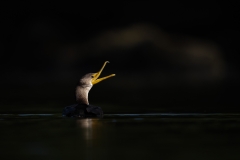
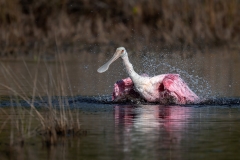
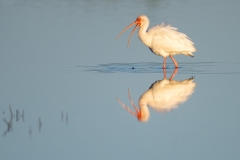
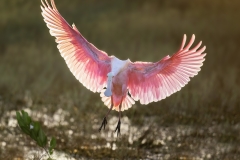
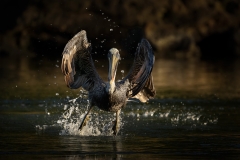
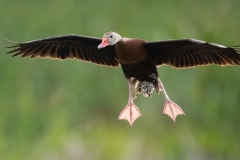

Hi, Steve, I very much enjoyed this article. Thank you so much for showing your findings to us. I have had a similar experience shooting at a distant subject through air space that was being disturbed by the heat of the sun.It was in Bosque several years ago, shooting from a heated car into 4 degrees outside temperature. I was shooting out of an opened window, resting the lens on my bean bag window support. An eagle was attacking a goose on the ground at about 300 feet distance. I did not notice the air disturbance in the viewfinder while… Read more »
Steve I live in North Dakota … It’s June and “cold” weather is still a fact of life! I recently purchased a new Nikon 600mm f4e. The 600 has only been on my bucket list for about 10 years now and I decided to spend the money before Nikon completely discontinues everything the F-mount line. I started testing my new toy and had good results … indoors. It was moderately cold out (~35 deg F) so I decided to simply open the back door and shoot long distance subject from inside to test focus and exposure. Without going into details, I was grossly disappointed… Read more »
Hi Steve, Thanks for that great tip, I have had sharpness issues (Nikon 500mm PF) when it seemed to me the subject should have been easy to to focus on (juvenile Sea Eagle on a post, at a quite close distance). Can’t remember the temperature at the time, and it may also have been not enough contrast in the subject, but I will definitely check this out and remove lens hood if this happens again.
Wow Steve, never would’ve thought that. Great tip, truly appreciate it. Still working my way though your BIF book, great book jam packed iwth info!
I have a 400 mm f2.8 with a monopod/gimble based on one of your recommendations. I could have used this yesterday when finding a swan preening on top of the ice. It really does not work with a monopod when standing outside on a sandy beach without some sort of place nearby that you can leave the hood when making the switch.
I see a tripod that will work with the 400 mm in the horizon
WOW, just tried and thank you, it was -36 C here up in Northern Canada and couldn’t figure out why was blurred… thank you thank you
This happened to me! Wish I had read this before I froze to death and got nothing in the first 600 pictures of eagles. The later ones were better.
Thanks
Okay, so I watched this tip and thought “that is really important to remember!” So this morning, I’m out in 20 degree weather after setting up all the custom modes on my new Z9. I haven’t had much time working with it yet because of the cold and windy weather. I tried everything but could not get a sharp shot. I took the camera indoors to customize it some more and look at the “hazy” shots. I then took it back outside and tried again which was fruitless. I went back and forth, trying everything including microadjusting my 500mm pf.… Read more »
Few people realize heat distortion can be more of an issue in winter than in the summer! I always load my gear in my backpack and put it in my truck the night before I go shooting and put it in the bed of my truck in the camper while I’m driving to my destination.About 15 minutes before I get to my spot if I’m going to be shooting from a vehicle I kill the heater and let the cab cool down, this helps a lot but it’s still better to exit the vehicle and stay away from that hood!… Read more »
So happy you discovered this, and very thankful to you for creating a ‘Backcountry grapevine’ to spread the fruits of your findings.
Neat detective work Steve.
So now there’ll be a booming accessories market in vent fans to fit in hood windows 😉
LOL, I think astrophotographers already have something like that for dew!
So glad you posted this….I knew from your prior articles to watch for heat distortion….and if things get windy nix the hood to help reduce camera shake (also your tidbit of info)…..had no idea on the cold/hood issue. I’m normally hoofing gear out in the wild, or freezing in my truck with the windows down, but this is another thing to watch for. Many thanks.
Really interesting about the hood.
Thanks Steve, I have been trying to photograph the Harriers in Cades Cove for several days. The temps were in the 20s in the early morning. Most of my shots have been soft. I was worried about my lens or camera. I would go back home around noon and check it out by photographing at a long distance and the images would be sharp. This happened day after day. You just solved my problem. The temps were much warmer when I shot at home in the afternoon.
Great video. And now i can put something i learned in high school physics to practical use. Those darn Schlieren waves. Again another great video.
Hi Steve, so glad you did this video. Recently I did some songbird shooting in my garden with a 150-600 Sigma Lens and had soft fotos throughout! Until now I kept thinking of my skills must have vanished. Didn’t try without hood. But I certainly will next time!
Thank you for all your good work!
Regards, Fredy
I understand this problem which really needs the photographic equipment to be at the same temperature as the ambient environment. If you are short of time take take the lens hood off for a few minutes to allow the front lens elements to cool down, then replace the lens hood. The length of time depends on the thermal mass of the lens equipment (a 600mm lens takes far longer that say a 70-200mm lens). Oh – and don’t forget that camera batteries like to remain warm!
Thanks for the tip! In Finland, this is a very relevant thing to consider. I guess I have to become much more OCD with my supertele-work.
Great analysis! Thanks for breaking the code on that.
Steve, you just explained why my short eared owl shots were soft!! what timing! Excellent observation and well done!
Wow, thank you for the tip Steve.
Thanks for the videos of awesome info Steve. Going all these extra miles in investigation and trials is truly amazing and I thank you for that as well.
Kind regards
Shaunie
I bought a lens heater a couple of months ago. I may have to use it as ankle warmer, or take off the hood.
What you say is true. I used to be deep into long range rifle marksmanship with very high magnification. Same heat waves, would kill you in the summer. We always like a slight breeze in the summer, it would break-up the heat waves
Ran into this elk hunting. The rifle scope blurred when the temperature changed. The best solution I found was to turn off the heat in the truck and roll down the window. Everything, including the driver, is the same frigid temperature.
Excellent detective work here and practical for several scenarios. in addition to pooping out of your car I was in a cabin and jumping out on to the deck in below freezing weather to grab quick shots. I see the same softness. GREAT tip.
Not related to the content at all, but if we watch the video on your website there doesn’t seem to be an easy way to like. Am I missing it ?
Nope, the site dines’t hav like buttons, but there’ snooze to compare to anyway since all the content is mine 🙂 But – feel free to head to YT and like 😀
Thanks for the tip! Thought I was having a focus problem with my camera, will give this a try.
Hi Steve
I am also facing same issue. As you rightly said temperature equalization is critical when there is big difference between storage area and shooting environment
Well that explains a bunch of my soft snowy owl photos. I was very frustrated and disappointed. Great tip!
Thanks for the heads-up Steve, something that has the potential for causing problems but not all that obvious to many of us. It could be the reason why some of my Moon shots taken with a 150-600mm with a long hood are a little soft – the hood stays in doors now for such shots!
Neat
I’ve encountered the same issue when shooting out my backdoor in the winter. Setting the camera in my cold garage helps a great deal. I knew the temperature was causing problems, but I didn’t realize it was the hood. I’ll definitely retract mine in the future. Thank you!
Steve you did not look happy to be outside in one degree temps!
LOL, yeah, cold temps are not my happy place! There’s a reason my workshops are in Africa and Costa Rica 🙂
Neither his gears wanted leave cozy space
Great and very useful information, Thanks
Great tip. I never Knew.
Wouldn’t you know it!! I was up in the Soo shooting Snowies last weekend. It was my first time there and shot after shot was soft. I was so frustrated. The AF seemed so sluggish, I thought I would need to send my lens in for repair. A totally frustrating experience. Back home, I took more pics of birds in the backyard and they were sharp as a tack! Now, I know. Da lens hood is coming off on my next trip to the UP. Thanks so much. Great explanation as always!
Or just leave the gear outside for a few minutes to get acclimated. Similar thing to hot and humid weather. It’s the temp differential that causes issues or so it seems.
Fantastic! You are assuredly not the only person that didn’t know this (I didn’t either, and it will be very useful to me). Practical as usual! Thanks, Steve!
Afternoon all. Great video as always. I have dealt with heat distortion before in both sports and wildlife imaging and it can ruin a great shot. I was planning my first cold weather trip back into Wyoming and Montana until shoulder replacement changed it. None the less I would not have thought this would have been an issue and this will go in the memory bank for the future. I love your video’s and would love to see some future material on the Z9. I am as many are waiting patiently for our preorders to arrive. I have read a… Read more »
I don’t think the learning curve is huge, although I think it’s shorter if you’ve had both the D5/6 and a Z body.
This is very interesting, thanks for posting! But now I’m wondering about my astrophotography. I use my Nikon 600mf4 as well as a Nikon 800mmf5.6, both with lens hoods on. I also use a lens warmer and my lenses to avoid condensation on the lens. But if I’m warming the lens, and the night air is obviously cooler, it would seem I would have the same problem. My shots are often a little softer than I would expect, but with astrophotography there are so many things that can affect the quality that it’s hard to pin things down. I’m wondering… Read more »
I think the hood at night helps with condensation and stuff, so I think you need it. I also think there has to be a significant difference in temps to really see a difference. However, I’m not an astrophotographer, so it may not ne the same for longer duration shots.
Thanks for the prompt reply! I watch almost all your videos and bought/read most of your ebooks. You’re the single best source of information for improving my photography. Fantastic stuff. I recommend you every time someone asks me a question about wildlife photography. I just hope you continue to save a little space for us DSLR hold-ons as you venture further into the mirrorless world. 🙂
I think in either way air density changes around warm and cold items will create some hazy environment around the lens.
Interesting, Steve. I will remember this next time I am getting fuzzy images on a cold day. Many thanks!
Hi Steve,
Thanks for the new video on the lens hood. Possibly a dumb question, but do lens hoods really provide that much benefit on say a 600 f/4? Is there really any reason to use it at all? Sure it affords some protection to the front element but flare shouldn’t be a problem when most of us are trying to get the sun at our backs. Clearly you’ve demonstrated it’s uselessness in cold weather and certainly in windy conditions it adds vibration to your rig. Thoughts?
Hoods are mostly to prevent flare, but if the sun is at your back, you don’t need them. I still like them for protection though.
excellent info as always, thank you for sharing this.
I have the exact same problem shooting backyard birds through an open window with my Z 7II & 500mm PF. It’s been cold in CNY. Thanks, removing the hood was the fix!
Often shooting from a warm house into cold air can cause issues even without the hood. The hot air form the house mixing with the cold air outside creates a local “bubble” of heat distortion that you have to shoot through. Still, glad to hear it helped 🙂
Who’d a thunk? Genius. Would this work for hot weather? Sun beating down on black hood causing more heat waves? Will have to test. Now, if I can only find hot weather.
It might, but if that sun is beating down over an open area, that’s gonna be the main cause of heat distortion.
sorry repeated comment…trying to delete LOL.
Super!! I think I’ve been a victim of this. As always, thanks for the awesome tips!
I wonder if you’d see the same thing going from A/C house or car to hot outdoors? Temp difference would likely be less and maybe condensation on the lens would be the bigger problem.
I’ve never seen this problem with that scenario, but as you say , condensation is a problem for sure.
Hi Steve,
Being a mechanical engineer and having background of air conditioning, the condensation will happen on any surface if the surface temperature is cooler than the dew point of the air. Like beer can sweats lot in summer than in winter. The dew point of the air in winter is well below the ambient temperature so the condensation is not possible. My thoughts
What a great suggestion. I have seen posts where folks are complaining about “mush” shots and it never occurred to me that heat from the hood was an issue. Taking shots from the truck in the cold is especially relevant to this discussion. Thanks, Steve.
Remember, if you’re shooting from a warm car, removing the hood won’t help.The problem is the warm air from the car mixing with the cooler air outside casing the same phenomenon we talk about in the video. See my heat diffraction and shooting from the car videos for more info. 🙂
Steve, Interesting discussion on heat distortion with long lenses, or any lens. Heat distortion is not just a photography problem. I was driving a large truck down toward the Ohio River on US 250 in 1969 on the only straight stretch, about a mile, on my route. It was hot and I could see the heat rising off the hot asphalt. What I did not see was the motor cycle stopped with the rider having both feet on the ground, no brake light. I was within a quarter mile of the bike before I saw it. I had a full… Read more »
That’s terrifying! Glad you were able to stop.